Finding effective insecticides for the garden that are safe and nontoxic can be challenging. We all want to safeguard the environment, our families, and our food. Still, most natural chemicals on the market are ineffective—all but neem oil. The ideal insecticide for gardeners is neem oil. In this article, let’s talk about how to use neem oil for houseplants.
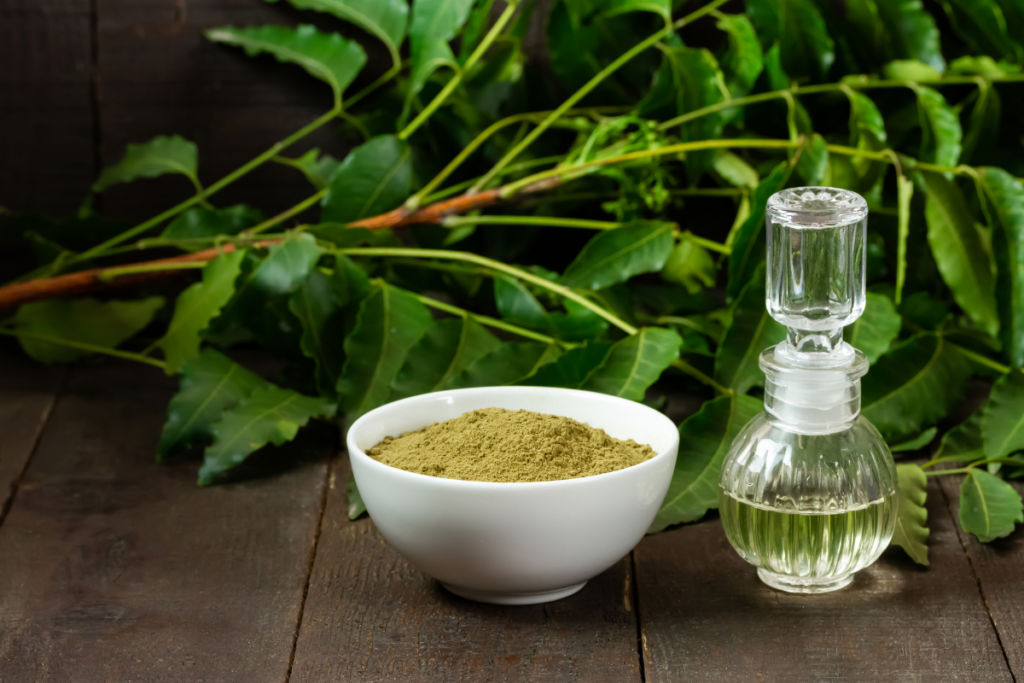
In the world of plants, neem oil is well-known for its ability to ward against pest infestations. Organic neem oil is beneficial for you even if your plants already have pests. Various pests can be killed and removed from your plants using neem oil. These pests won’t last long if you apply neem oil to your plants.
The neem oil interferes with the bugs’ hormones and brains, causing them to cease feeding and reproducing and eventually die. The bugs are also smothered, which causes them to die more quickly.
Neem oil not only kills them but also repels them, and because of a tiny aftereffect, it keeps them away longer than other organic remedies.
Even better than buying it in stores, we’ll provide you with a recipe for making your own neem oil for houseplants at home. When pests are present on or around your plant, neem oil is an excellent treatment to kill them. Let’s dive right in and cover everything you need to know!
What Is Neem Oil?
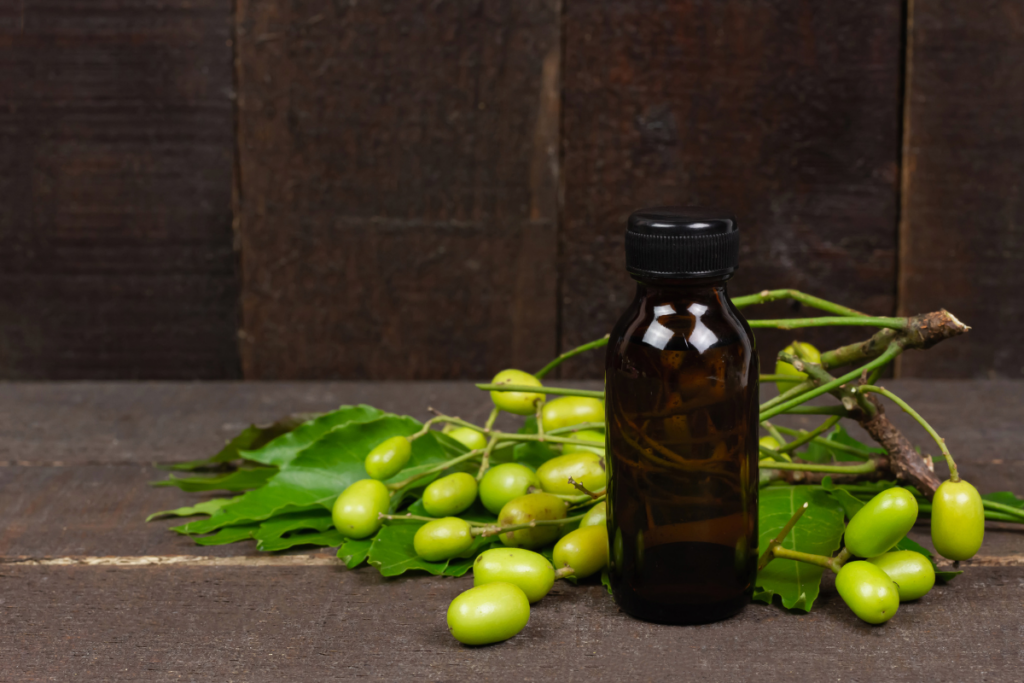
Natural essential oil from the neem tree (Azadirachta indica) is called neem oil. Neem oil can be used for various purposes, including treating and controlling pests on indoor plants. It is deemed safe by the Environmental Protection Agency (EPA) for usage around pets and indoor plants.
Other neem oil products include neem oil concentrate, neem cakes, a sort of soil amendment, and blends with other insect-repellent essential oils.
If you often put neem oils on your houseplants, you won’t have a lot of bug issues. In order to be free from these insects, they can even be sprayed on the soil in addition to being used to clean plants.
Related: How To Use Neem Oil On Houseplants? A Comprehensive Guide
Benefits Of Neem Oil
1. It Is Harmless
Because it is considered a natural and nontoxic insecticide, neem oil is excellent for use in the home. Although you shouldn’t drink it straight from the bottle, you can use it on herbs and plants that you want to eat in the future.
Since it doesn’t persist in the environment like chemical pesticides, it doesn’t raise the same ecological issues. However, it eventually undergoes total breakdown by microbial colonies in plants.
2. Other Animals Can Live There Relatively Safely
Additionally, neem oil for houseplants are rather focused only on pests that genuinely endanger your plant will be killed by the neem oil. It won’t harm flies and bees that are merely passing through.
When To Utilize Neem Oil
Neem oil works well as a prevention strategy and also as a pest control treatment for existing pest infestation. Utilize neem oil either in the day or at night. Neem oil shouldn’t be used in the morning because, when mixed with sunlight, it could burn plant foliages.
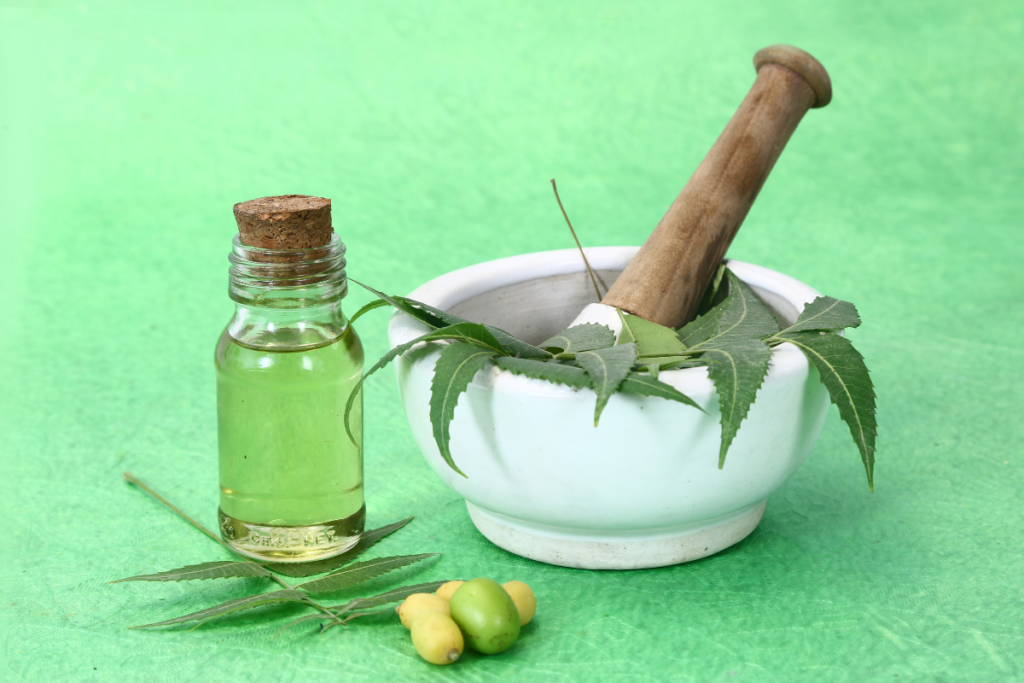
Neem oil for houseplants is most effective during the whole growing season because it eliminates pests at different stages of their life cycles. This includes the eggs, larvae (called as grubs), pupae stage, and adults.
Neem oil kills a wide variety of insects, including mealybugs, aphids, whiteflies, leafhoppers, Japanese beetles, fungus gnats, thrips, and some other plant pests, including nematodes and spider mites.
Moreover, neem oil can fight the fungi causing black spots, powdery mildew, anthracnose, spot, scab, and leaf spottings. Neem oil is frequently safe around beneficial insects such as pollinators, ladybugs, and earthworms because they don’t consume the foliage of plants.
Related: How to Use Neem Oil for Plants as an Organic Pesticide? Plus, Amazing Benefits!
How Neem Oil Works Houseplants
There are two distinct uses for pure neem oil for houseplants. Smothering or suffocating the insects that are devouring your plants is the first option. Only tiny insects, like spider mites, excel at doing this activity. The second goal is to eliminate any insects thanks to the chemicals in neem oil. This kills both the small and larger insects that are on your plants.
The chemical compound, called azadirachtin, disrupts the insect’s regular biological functions, causing them to go inactive and finally die. This method is secure for getting rid of pests on your plants. Using neem oil won’t harm your plant in any way. Conversely, you are greatly reducing the allure of your plant to insects and other pests.
Keep in mind that neem oil takes time to begin working. In most cases, it takes a few days, typically 3 to 4 days, and a few sessions before you start to receive the desired results.
Using Neem Oil
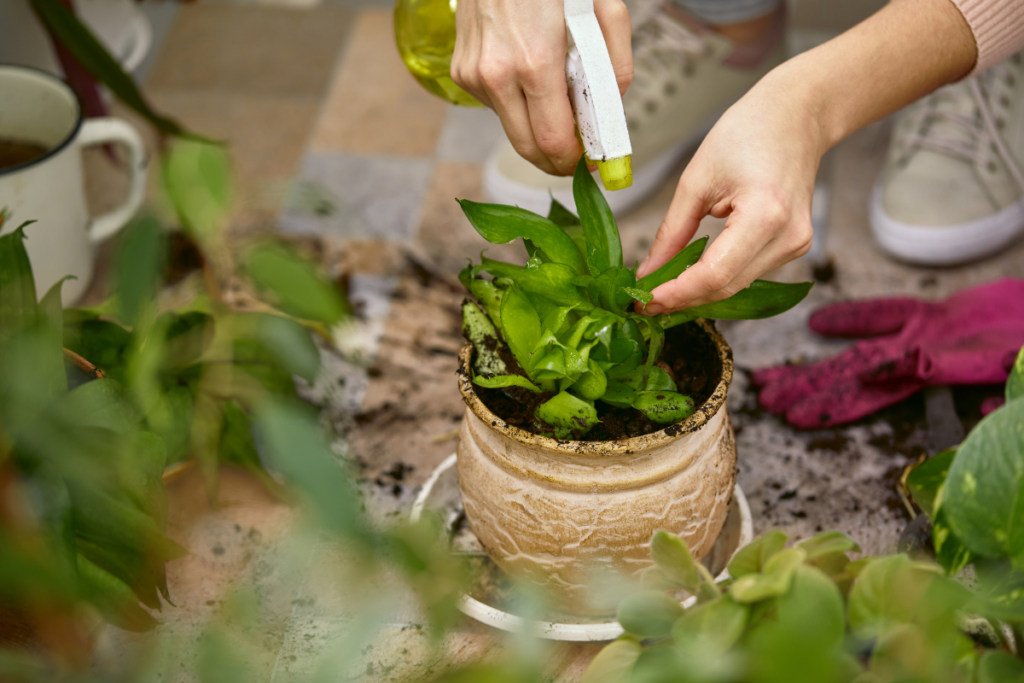
Neem oil is, therefore, a very efficient means of eliminating pests, but can it be applied to any plant? Yes, definitely. Neem oil can be used for the majority of plants, but it won’t work on plants with rough surfaces.
If your plants have fur, needles, or other characteristics that can make it easier for pests to conceal themselves deeper inside the leaves, neem oil won’t work on them. Neem oil shouldn’t be used on Calathea plants or any other plants with fuzzy leaves.
Neem Oil Insecticide
The pesticide neem oil affects a variety of plants systemically when applied as a soil drench. This suggests that it spreads throughout the tissue through plant absorption.
Once the substance has gotten into the plant’s vascular system, insects eat it while eating. It can prevent the development of larvae, lessen or stop mating behavior, and, in some cases, coat insects’ breathing apertures and kill them. Additionally, the substance stops or reduces insect feeding.
In addition, based on the product material, it is a helpful mite repellant. It handles over 200 chewing or sucking insects, including aphids, mealybugs, scale, and whiteflies.
Neem Oil Fungicide
When used as a one percent solution, neem oil fungicide is effective against rust, mildew, and fungi. In addition, other problems like root rot, black spot, and sooty mold are thought to benefit from its use.
Creating Your Own DIY Neem Oil Spray
Neem oil is offered in spray bottles in gardening supply stores that contain some variation of the neem oil blend. You can make it yourself for a lot less money, or you can use these readymade combinations, as you choose. Neem oil that has been cold-pressed and unfiltered, a spray bottle, warm water, and dish soap are needed to make it yourself.
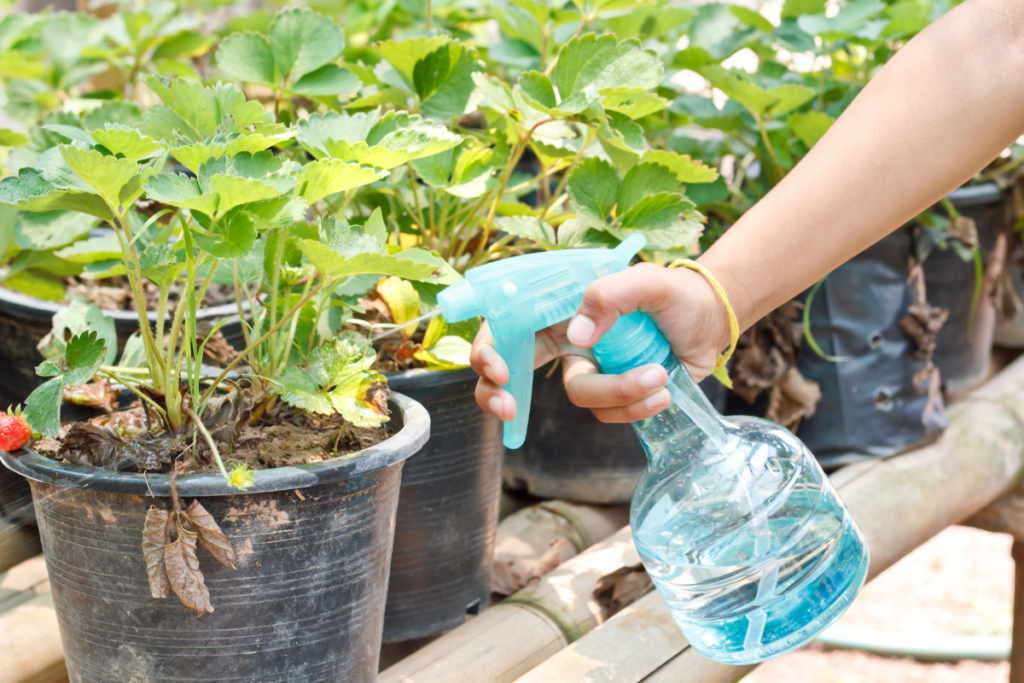
Neem oil that has not undergone any processing is known as 100% neem oil. The neem oil mixture is often not included in the prepackaged bottles offered at gardening supply stores; instead, alcohol and other chemicals are added. You may use this on your plants without adding any other chemicals to our mixture.
Below is the neem oil insecticide recipe you can follow to make your own neem oil spray.
Start by filling your spray bottle with warm water. After that, add 0.5 teaspoons of neem oil and a few drops of dish soap (3-4 drops). Shake your spray container vigorously with the lid on. It is easier to use if the neem oil, soap, and water are combined in the spray bottle.
After shaking the spray bottle, spray your plants. Before each use, give your spray bottle a good shake. Neem oil won’t mix with water because it is an oil; rather, it will float on top of it.
Related: How to Use Neem Oil as Organic Pest Control on Houseplants?
Summary Of Steps:
1. Compile your resources— get spray bottle, gallon of liquid water, mild liquid soap, and neem oil that is cold-pressed.
2. Mix a little soap into little water. A teaspoon of liquid or insecticidal soap should be added to a gallon of warm water.
3. Add a very small amount of the neem oil. You can add at most two to three tablespoons of the neem oil to your concoction.
4. Spray the mixture on your plants. Using a foliar spray bottle, apply the neem oil mixture to only a small region of your lovely plants first. Wait for a full day. If the mixture hasn’t harmed any plants, you may then completely sprinkle both your outdoor and indoor plants by sprinkling directly on their plant leaves.
5. Reapply your horticultural neem oil mixture as needed. Every 14 days, apply the neem oil as a preventative measure. If you’re seeking to be proactive against insect infestation, for at least once per week, neem oil mixture should be sprayed on your plants.
Applying Neem Oil To Your Plants
We’ll assume you’ve prepared this step’s water and neem oil mixture from the previous section. For this part, you can alternatively utilize the pre-made mix. Neem oil can be applied to plants in a variety of ways.
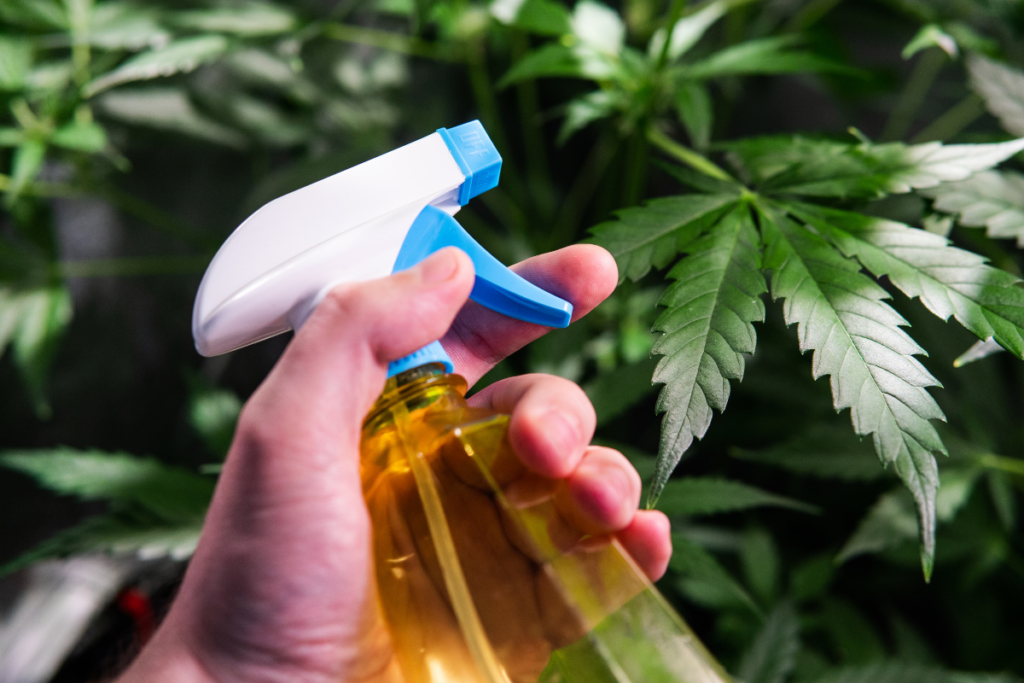
Neem oil doesn’t mix with water because it is an oil and is thicker than water. Be sure to use warm water while combining these two ingredients. This dramatically simplifies combining these two. If you’re using a spray bottle, ensure the water, soap, and neem oil are thoroughly mixed in the bottle before using it.
Let’s discuss the following three strategies and their benefits and drawbacks.
Mist Your plants With A Spray Bottle Filled With Neem Oil.
The quickest way to apply neem oil to your plant to combat the insect is by misting it. However, spraying your plant could cause you to overlook some areas. This is acceptable if the pests on your plant aren’t particularly pervasive. However, if the pest is active, you may need to spritz your plant more than once to ensure you’ve covered every area. Depending on how active and pervasive the bug is, wiping your plant can be a better option.
Mix Neem Oil With Water And Soap In A Bowl To Clean Your Plant.
Wipe off your plant using the neem oil and soap solution using a microfiber towel or cotton ball if you want to be thorough and ensure that you don’t miss any sections of your plant. Depending on how big your plant is, wiping it off fully does take a lot longer.
To Get Rid Of bugs, Immerse A Q-Tip In Your Diluted Neem Oil Solution.
You can use a Q-Tip dipped in the Neem Oil mixture to eliminate spider mites from your plant while dealing with them. In addition, you can prevent the bug from returning by marking the area where it was by putting a Q-Tip into the Neem Oil mixture. Using this technique, you’ll also destroy the pests your Q-Tip is in contact with.
Some plants may be harmed by neem oil, especially if it is applied frequently. Before spraying the entire plant, test a small section of it first and wait 24 hours to see if the affected leaf has suffered any damage. If there is no damage to the plant, neem oil shouldn’t be impacted.
To prevent burning the leaves and give the plant enough time to absorb the treatment, neem oil should only be used at night or in low light conditions. Extreme heat or cold should not be experienced when using neem oil. It is not advised to apply to plants that are stressed out from drought or overwatering.
Weekly applications of neem oil insecticide are recommended to control pests and avoid fungal issues. Apply as you would other oil-based sprays, making sure to cover all the leaves, particularly any that have serious pest or fungal problems.
Alternatively, you can also use the same neem oil mixture as a neem oil soil drench.
Where To Apply Neem Oil To Your Plants
Neem oil mixture should be applied always to the bottoms and tops of leaves especially when spraying a plant to treat or prevent bugs. This is due to the fact that insects like to gather on the leaf undersides. You should treat those surfaces lightly if any pests have made their transit to the soil or stem.
Only healthy plants should get neem oil applications. If your plants are yellowing, browning, drooping, or otherwise appear abnormal, they may be struggling with water, sunlight, or nutrient deficiency. Neem oil might make things worse.
Finally, stay away from spraying neem oil mixture on plants situated next to an illuminated window. It is advised to avoid using neem oils on your plants that are exposed to direct sun to prevent leaf burn. The effect of this oil to directly lit plants make neem oil “poisonous”.
Instead, before spraying, relocate your plant to a shaded area, like the bathroom, and wait for at least one to three full days before moving your plant to a sunnier spot. Neem oil should have enough time to break down as a result.
Repeat The Use Of Neem Oil
Neem oil takes a few days to start working, so keep cleaning and spraying your plants. It can indicate a pest issue if you see tiny holes, webbing, or sticky material on the leaves of your houseplants.
Look closely to see if you spot any little creatures on the tops or undersides of leaves; if you do, treat them with neem oil. You can use neem oil as a preventative strategy even if your plant is healthy and bug-free. If you’ve ever battled with bugs or lived in an area where they thrive in a warm, humid atmosphere, you should develop the habit.
Spraying your plants with neem oil at least once a week can protect them from pests and infestations, even if you are not currently dealing with bug problems.
It’s a terrific idea to spray your plants with your own neem oil mixture just before wiping them off if you often wipe your plants otherwise. Not only will your plant look fantastic, but any pests that might wish to live in or around it will be kept out.
Editor’s Recommendations
13 Easy Cat-Safe Plants For Your Innoxious Indoor Garden
15 Best North Facing Window Plants For A Green Oasis In Shady Room
16 Best East Facing Windows Plants – The Stars Of Rising Sun







